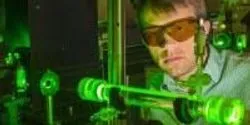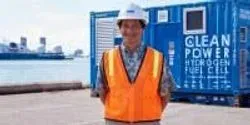All by Sandia National Laboratories
Filter by
AllArticlesAudioEbooksEventsInfographicsNewsProductsSurveysDocumentsVideosVirtual EventsWebinars
Transportation accidents, such as trucks crashing on a highway or rockets failing on a launch pad, can create catastrophic fires. It’s important to understand how burning droplets of fuel are generated and behave in those extreme cases, so Sandia National Laboratories researchers have developed 3-D measurement techniques based on digital in-line holography.

Working at temperatures matching the interior of the sun, researchers at Sandia National Laboratories’ Z machine have been able to determine experimentally, for the first time in history, iron’s role in inhibiting energy transmission from the center of the sun to near the edge of its radiative band — the section of the solar interior between the sun’s core and outer convection zone.

Researchers at Sandia and Argonne national laboratories have demonstrated, for the first time, a method to successfully predict pressure-dependent chemical reaction rates. It’s an important breakthrough in combustion and atmospheric chemistry that is expected to benefit auto and engine manufacturers, oil and gas utilities and other industries that employ combustion models.

Sandia National Laboratories is tackling one of the biggest barriers to the use of robots in emergency response: energy efficiency.

Large-scale storage of low-pressure, gaseous hydrogen in salt caverns and other underground sites for transportation fuel and grid-scale energy applications offers several advantages over above-ground storage, says a recent Sandia National Laboratories study sponsored by the Department of Energy’s Fuel Cell Technologies Office.

Researchers at Sandia National Laboratories’ Z machine have produced a significant output of fusion neutrons, using a method fully functioning for only little more than a year.

They are with us every moment of every day, controlling every action we make, from the breath we breathe to the words we speak, and yet there is still a lot we don’t know about the cells that make up our nervous systems. When things go awry and nerve cells don’t communicate as they should, the consequences can be devastating. Speech can be slurred, muscles stop working on command and memories can be lost forever.

It may sound strange to say that nuclear weapons must survive radiation. But as part of its mission of ensuring the nation’s stockpile is safe, secure and effective as a deterrent, Sandia National Laboratories must make sure crucial parts can function if they’re hit by radiation, especially a type called fast neutrons.
















